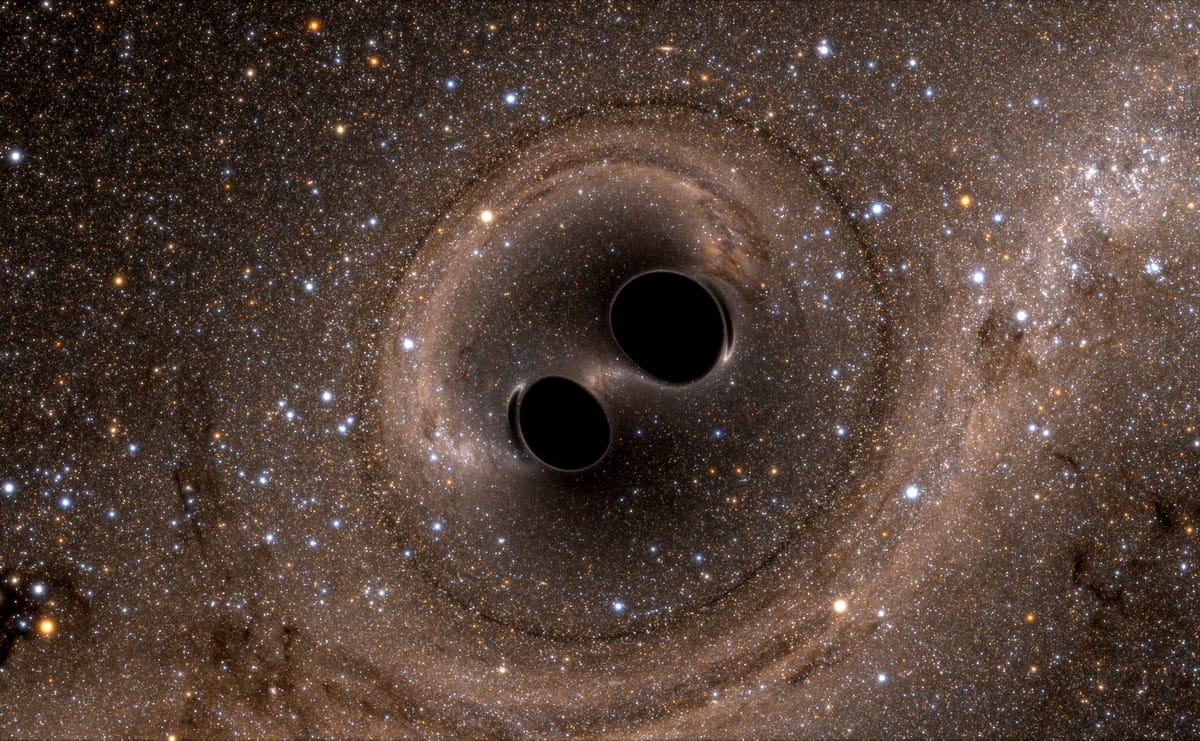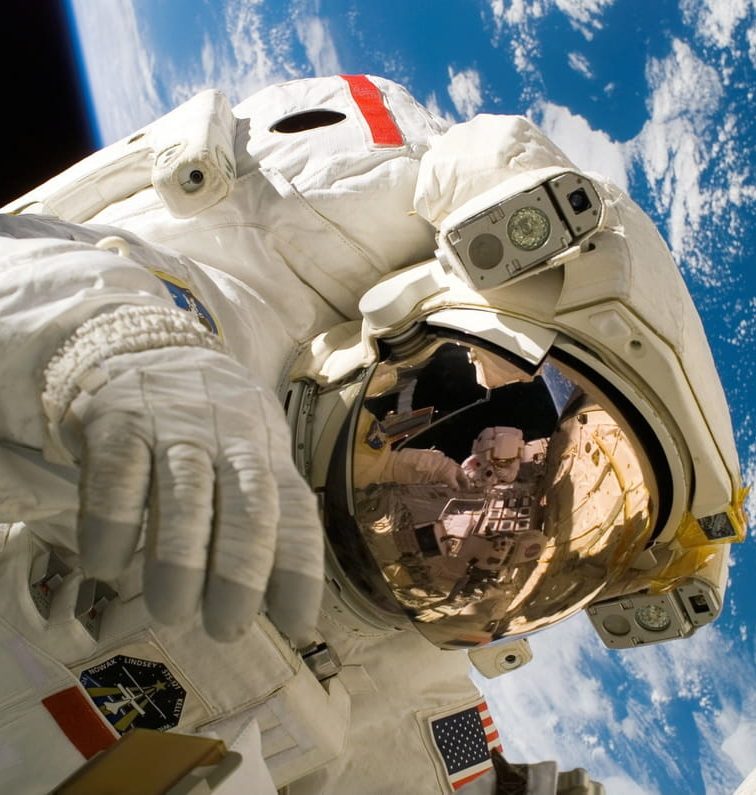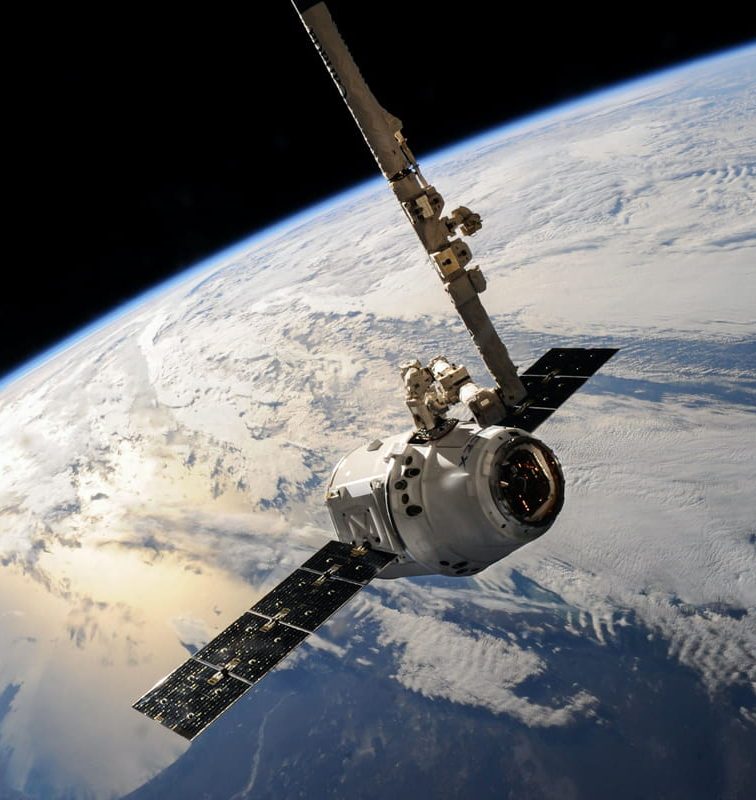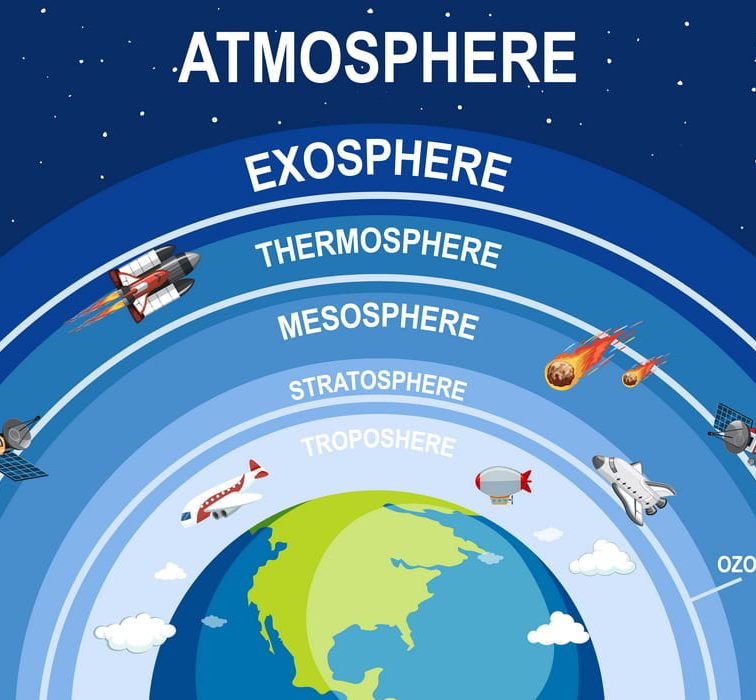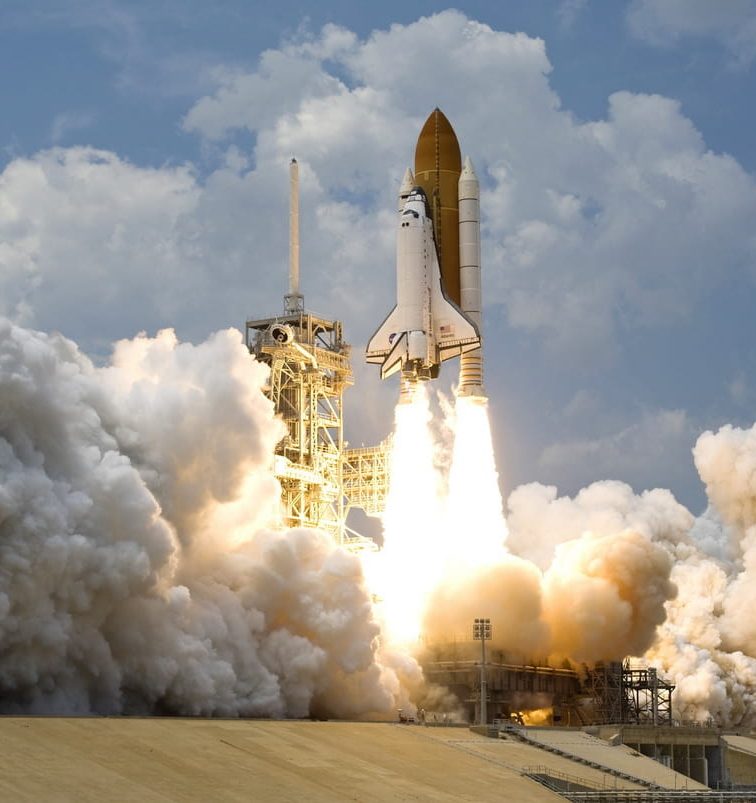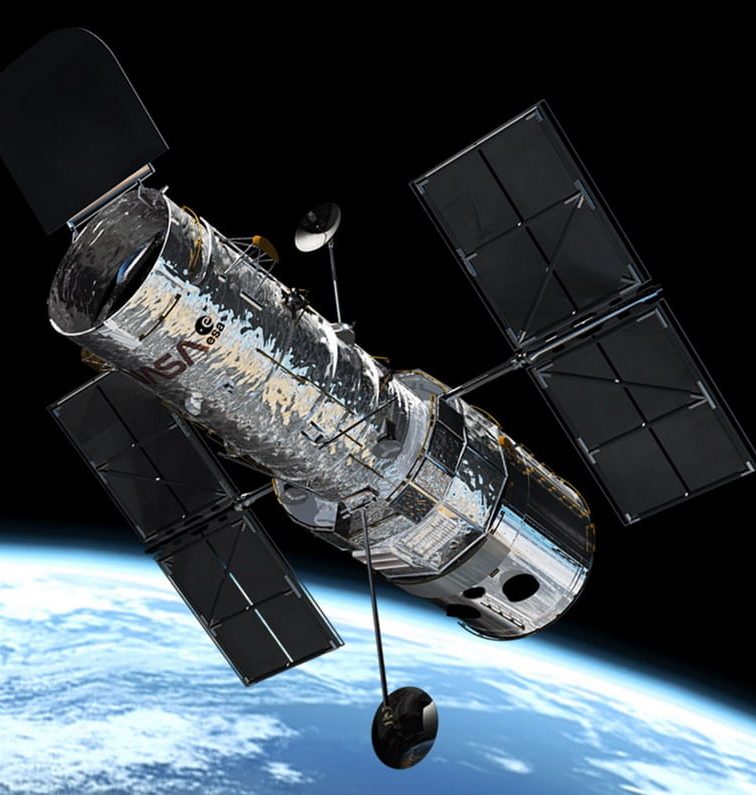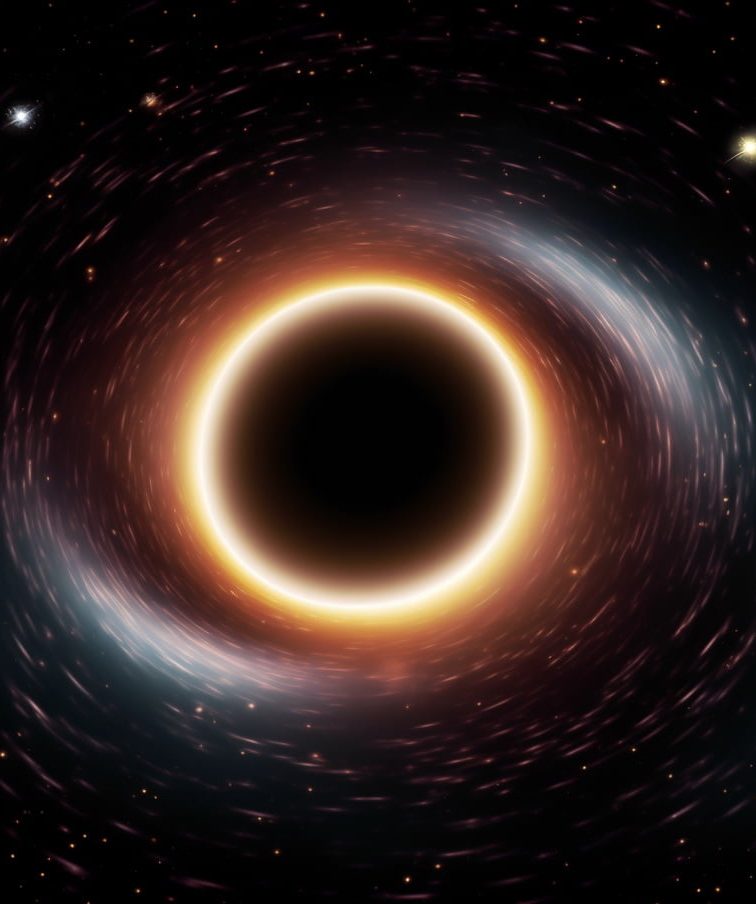Ever wondered what’s keeping you stuck to this big blue ball we call home? Spoiler alert: it’s gravity! And while you may think you know this universal force because, well, it’s been pulling you down since day one, there’s a myriad of gravity fun facts waiting to be unveiled.
From Galileo dropping balls (not beats!) in Pisa, to the eerie, unrelenting pull of black holes, gravity isn’t just about keeping your feet on the ground. It’s a cosmic dance that choreographs the motion of stars, planets, and even light! So, lace up those gravity-defying shoes, and let’s embark on a witty journey, unearthing the mysteries of the very thing that’s been pulling your strings (and everything else) all along.
1. Gravity’s Invisible Handshake!
Gravity isn’t just a good old force; it’s more like Mother Nature’s magnet. Think of it as an invisible handshake, binding every particle to its neighbor.
This unseen force ensures astronomical bodies like planets, stars, and galaxies don’t fall apart like a badly built LEGO set. Without it, the universe would be a chaotic, scattered mess – kind of like your bedroom on laundry day.
2. Galileo, the Rockstar of Gravity
Before Galileo and gravity had their iconic meetup, folks believed heavier objects fell faster. So, in a bid to drop this misconception (pun intended), Galileo climbed up the Leaning Tower of Pisa and released two balls of different masses. The crowd held its collective breath, only to gasp in surprise when both balls hit the ground simultaneously.
Rockstars might drop mics, but Galileo? He dropped balls and, in the process, some outdated beliefs.

Image source: npr.org
3. Not All Planets Are Created Equal: Differing Gravities
If you’re eyeing a space vacay, here’s a weighty tip: The number on your bathroom scale will yo-yo across the universe. That’s right! Different planets have different gravities. If you think Earth’s gravity gives you love handles, you’d be like a feather on Mars, which has only about 38% of Earth’s gravity.
But don’t start packing just yet. Your weight would almost triple on Jupiter! Talk about planetary diet plans. So next time you feel heavy, remember it’s all relative. Or should we say… planetary?
4. Bending Light: Gravity’s Party Trick
We often think of light as untouchable, always dashing straight ahead. However, gravity likes to play pranks, even on light! Large masses, like stars and planets, can warp and bend the very fabric of space-time. When light passes near these massive objects, its path gets deflected.
This phenomenon, called gravitational lensing, allows us to see objects hidden behind massive bodies like galaxies or black holes. It’s like peering through a cosmic magnifying glass, thanks to gravity’s whimsical antics.
5. Ocean Waves and Moods: Blame It on the Tides
Ever felt the ocean’s moods shift with the changing tides? Yep, gravity’s behind this too! Our moon and the sun are the puppeteers of our ocean tides. The gravitational attraction from these celestial bodies causes the oceans to bulge, giving rise to high and low tides.
If you’ve ever been stranded on the beach waiting for the tide to come in or out, you’ve experienced gravity’s gentle push-pull game firsthand. Next beach trip, remember to send a silent thank-you note to gravity for those rhythmic ocean waves.
6. Living in a Warped Reality: Gravitational Waves
Gravitational waves are the universe’s gossip carriers. These ripples in space-time occur when massive objects, like colliding black holes or neutron stars, send shockwaves across the universe. Albert Einstein first predicted these waves in 1915 with his theory of relativity.
Fast forward to 2015, and scientists finally had the instruments sensitive enough to detect these space-time whispers. Discovering gravitational waves was like being handed the universe’s old, dusty diary, revealing secrets and stories from eons ago.
7. How Do We Weigh Less on the Moon?
If you’ve been dreaming of feeling light on your feet, the Moon is your ideal destination. But why exactly do we weigh less there? It’s all about mass! The Moon has just about 1/81 of Earth’s mass. As a result, its gravitational pull is considerably weaker – about 1/6th of Earth’s, to be exact.
So, if you weigh 180 pounds on Earth, on the Moon you’d tip the scales at a mere 30 pounds! It’s not magic; it’s just good old physics. You’d be lighter, bouncier, and probably more inclined to do some lunar gymnastics. Fancy a moonwalk?
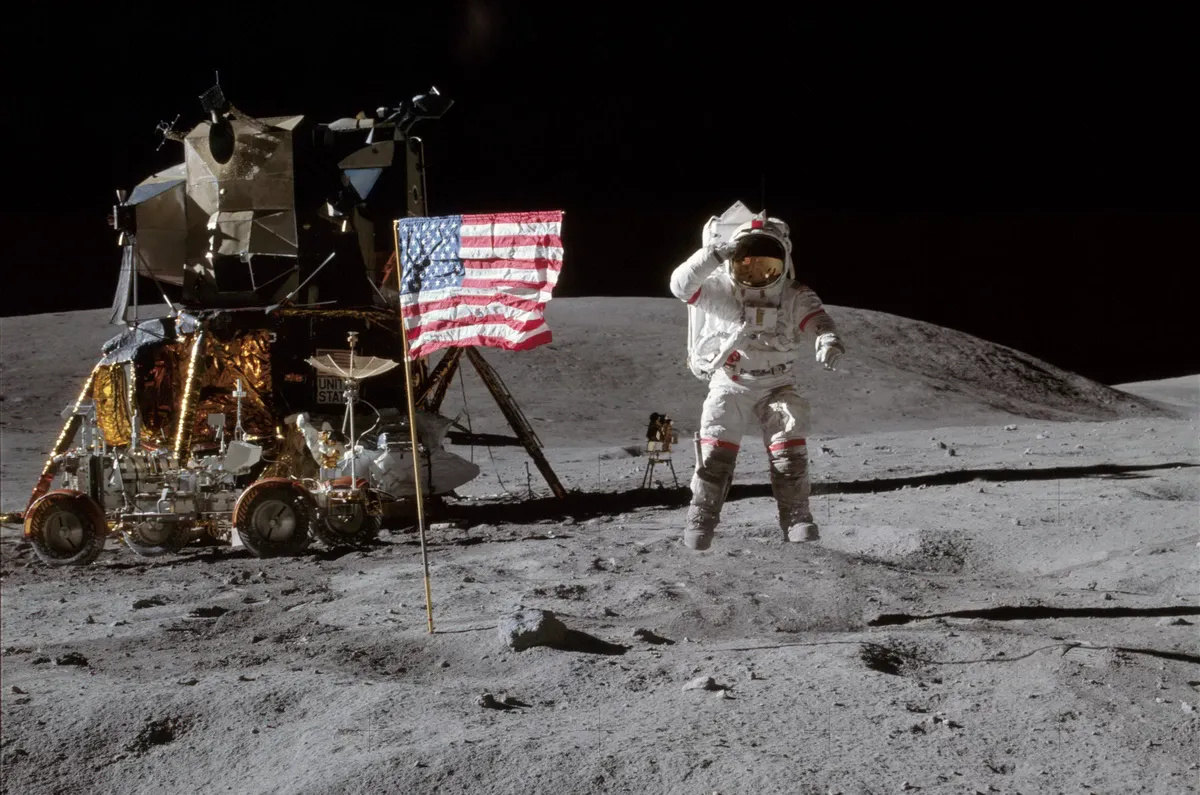
Image source: Wikimedia Commons
8. The Great Red Spot on Jupiter: A Storm Defying Gravity
Jupiter’s Great Red Spot is like the storm that never RSVPs its exit – it’s been raging for at least 400 years! This massive anticyclonic storm, bigger than Earth itself, has baffled scientists for centuries. It’s a vivid example of how atmospheric dynamics, combined with Jupiter’s immense gravity, can create and sustain such a monstrous storm system.
Despite its enormous gravitational pull, Jupiter’s fast rotation and unique atmospheric conditions help the Great Red Spot resist being pulled apart. It’s a perfect example of nature’s balancing act – where the force of gravity meets the power of atmospheric winds.

Image source: nasa.gov
9. We Aren’t Stuck, We’re Just Gravitationally Committed to Earth
Feeling stuck? Well, technically, you’re not! It’s just that Earth has made a gravitational commitment to you. Our planet’s gravitational pull ensures everything – from oceans to the atmosphere and, yes, us too – stays firmly attached. Think of it as Earth saying, “I’ve got you!” every single day.
So, even if you’ve ever fantasized about soaring like a bird or floating like a balloon, remember that Earth’s commitment keeps our feet firmly planted on the ground. It’s a long-term relationship that’s been going strong for billions of years. Talk about dedication!

10. Mars: Where You’d Be the Jump King!
Feeling grounded by Earth’s gravitational pull? Try Mars for a refreshing change. With just 38% of Earth’s gravity, Mars’ gravity gives you an unprecedented spring in your step!
Let’s say you’re decent at basketball here on Earth. On Mars, you’d be dunking like a pro, leaping almost three times higher. But remember, while you might be the jump king or queen on the Red Planet, landing might take a bit of getting used to. Who knows? Mars might just be the place to host the next interplanetary Olympics!
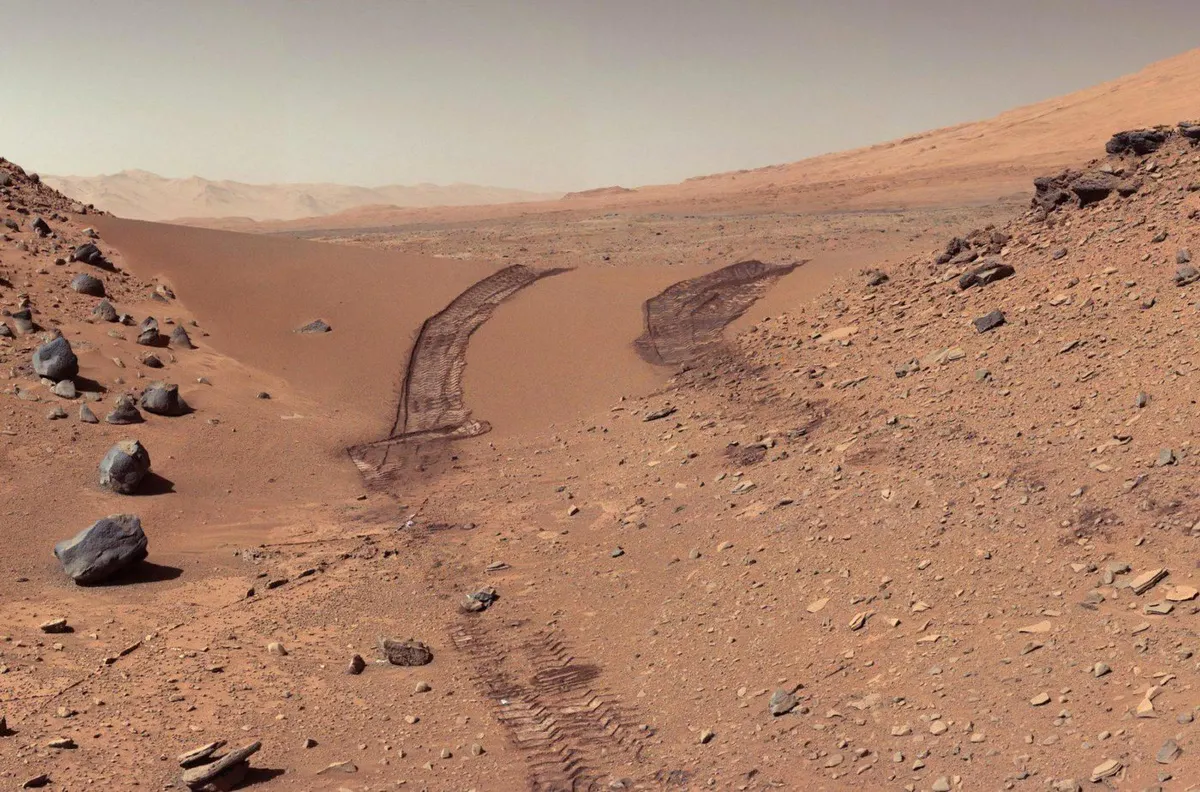
Image source: fsmedia.imgix.net
11. Black Holes: The Bullies of the Universe
Black holes aren’t just mysterious voids; they’re the universe’s ultimate gravitational giants, hoarding mass like no other celestial object. Think of them as the bullies in the cosmic playground, taking everyone’s lunch money (or, in this case, light and matter).
Once you get too close to a black hole’s event horizon, no amount of struggling can save you from its grasp – not even light can escape! That’s right, these cosmic entities are so dense and their gravitational pull so strong, they gobble up everything, making them the darkest, most mysterious objects in the universe.
Learn 30 Fun Facts About Black Holes.
12. The Apple Tale: Newton and Gravity’s Love Story
The famous tale of Sir Isaac Newton being hit by an apple, leading to his revelations on gravity, has an air of whimsy around it. While the details of this story might be a bit embellished, the core idea remains true (pun intended!). Newton did wonder why apples fell straight down, and this curiosity led him to formulate the theory of gravity.
It’s not every day that snack time musings change the course of scientific history, but Newton’s “aha!” moment did just that. Today, every time you see an apple, remember, it’s not just a fruit; it’s a symbol of one of humanity’s most profound realizations.

Image source: artuk.org
13. Zero Gravity Isn’t Actually Zero
The term “zero gravity” conjures images of astronauts floating freely in space, but it’s a bit of a misnomer. In reality, astronauts in orbit are experiencing what’s called “microgravity.” They, and their spacecraft, are falling towards Earth due to its gravitational pull.
However, because they’re moving forward at a high speed, they continuously fall around the Earth instead of directly into it, creating an endless free-fall. This perpetual free-fall simulates a gravity-free environment, hence the feeling of weightlessness. So, while “zero gravity” might sound cooler, it’s not entirely accurate. Space has its quirks!
14. The Amusing Game of Weighty Astronauts
Have you ever thought about the weight of astronauts in their bulky suits and wondered how they manage to do their spacewalks? It’s all a play on weight versus mass. While in space, astronauts are essentially weightless due to the perpetual state of free-fall, but their mass remains the same. This means, while they might not “weigh” anything, they still have inertia.
So, any motion they make, they need an equal and opposite motion to stop! This can make the simplest tasks, like turning a wrench or pushing off a spacecraft, a hilarious spectacle of floating and spinning.

Image source: newsweek.com
15. “Weight” a Second, What About Weightlessness in Space?
It’s a common scene in movies: astronauts floating in their spacecraft, playing with floating droplets of water. But have you ever stopped to think why? It’s not that space lacks gravity; in fact, gravity extends far beyond our planet.
But the spacecraft, along with its crew, is in a continuous freefall around Earth, giving the impression of weightlessness in space. They’re all falling at the same rate! So, next time you see an astronaut seemingly defying gravity, remember, they’re just free-falling in style.
16. Climates: How Earth’s Gravity Pulls Some Strings
Ever imagined the Earth without its layers of atmosphere? Probably a chilly thought! One of the reasons we have our cozy, life-sustaining atmosphere is because of Earth’s gravity.
Our planet’s gravitational pull ensures that the atmosphere doesn’t just float away into space. This atmosphere, influenced by gravity, plays a key role in circulating ocean currents and air masses, which in turn shape our climates.
How does Earth’s gravity affect the climates? It indirectly pulls strings behind the scenes, keeping things in balance and ensuring our planet remains the hospitable blue dot we call home.
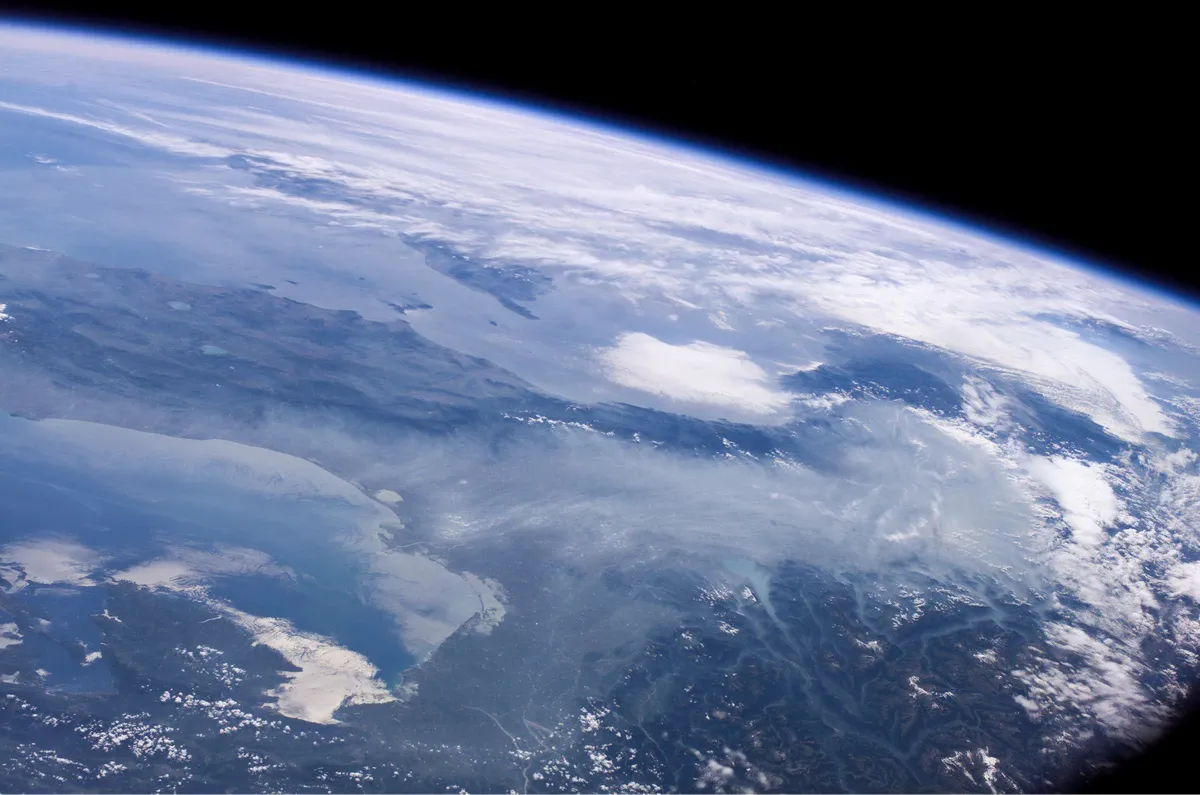
Image source: nasa.gov
17. Weird Fact: Your Head Ages Slower Than Your Feet!
Crazy, right? But thanks to Einstein’s theory of relativity, this is a genuine, albeit minuscule, effect! Gravity affects the passage of time. The stronger the gravitational force, the slower time passes. So, because your feet are slightly closer to the Earth’s center and experience a tad more gravity than your head, they age… well, slower!
But don’t get too excited—this difference is so tiny that over a lifetime, your feet might only be younger by a few billionths of a second. Still, it’s a neat party trick to tell your friends that your feet are technically younger!
18. Birds, Bees, and the Secret Gravity Dance
Gravity’s influence isn’t just felt by astronomical bodies; even our feathery and buzzy friends dance to its tune. Birds and bees use the Earth’s gravitational pull to navigate.
For example, some birds have tiny iron-rich cells in their beaks that act like miniature compasses, aligning with the Earth’s gravitational field. Bees, on the other hand, can detect gravity’s direction, helping them determine the angle to fly when seeking nectar.
So, the next time you see a bird or bee buzzing about, know that they’re performing a choreographed ballet with gravity as the lead!

Andy Reago & Chrissy McClarren / Flickr
19. Floating Water in Space Stations
Imagine sipping water not from a glass, but from a floating bubble! In space stations, with the effect of microgravity, liquids don’t flow like they do on Earth. Instead, they form floating blobs.
Astronauts use special straws to drink from these water globules. These straws trap the floating blobs and prevent them from accidentally escaping into the spacecraft’s electronics.
The experience of drinking water in space stations is both a scientific marvel and a fun, messy game. Just make sure you catch all the floating droplets before they drift away!
20. Ever Seen a Planet Wobble?
No, planets aren’t just rolling around tipsy in space. But they do exhibit a phenomenon called axial precession, often referred to as a ‘wobble’. This slow, circular motion happens as a planet rotates on its axis, and is primarily caused by gravitational forces exerted by neighboring astronomical bodies.
For Earth, this wobbling cycle takes about 26,000 years to complete. This precession affects our planet’s orientation relative to distant stars and has an impact on our seasons over very long periods. So, if you ever thought space was just a calm, unchanging expanse, think again!
21. The Mountainous Mystery: Why Gravity Varies
Gravity isn’t as uniform as we might think. While we consider Earth’s gravitational pull consistent, it varies slightly across the globe. Areas with more mass, like mountain ranges, exert a stronger gravitational force. Conversely, regions with less mass, like oceanic trenches, have a weaker pull.
The Himalayas, for instance, due to their enormous mass, have a stronger gravitational effect than flatter regions. It’s quite the revelation that gravity isn’t the same everywhere on Earth, and it’s a bit like nature’s own rollercoaster of gravitational highs and lows.
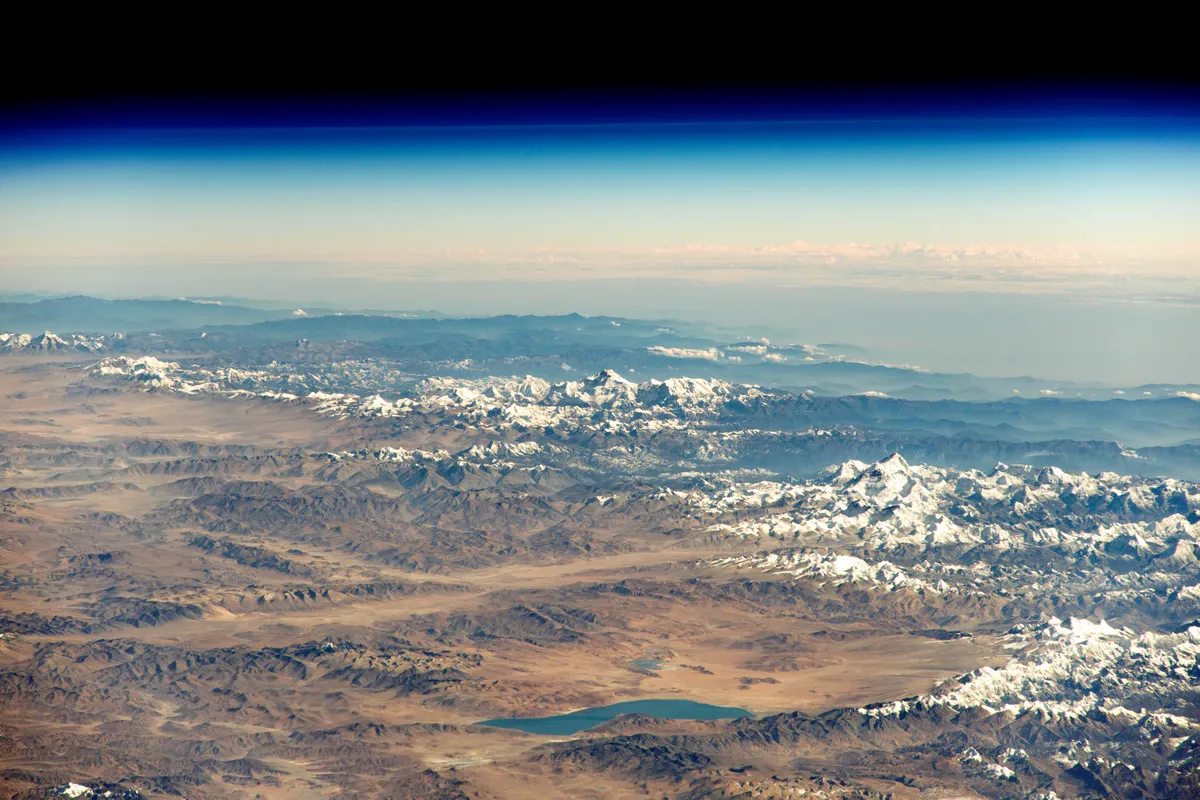
Image source: nasa.gov
22. Our Milky Way Has Some Serious Gravitational Muscle
When it comes to heavy lifters in the universe, our Milky Way galaxy is a powerhouse. With a mass of about 1.5 trillion solar masses, it flexes its gravitational muscles by influencing the orbits of stars, planets, and even other galaxies. This vast amount of mass, especially from dark matter, creates an enormous gravitational pull that holds the galaxy together.
Just to give it some perspective: our Sun is one of the billions of stars in the Milky Way, and its gravity alone keeps all the planets, including Earth, in their respective orbits. Now, imagine the combined strength of billions of such stars!
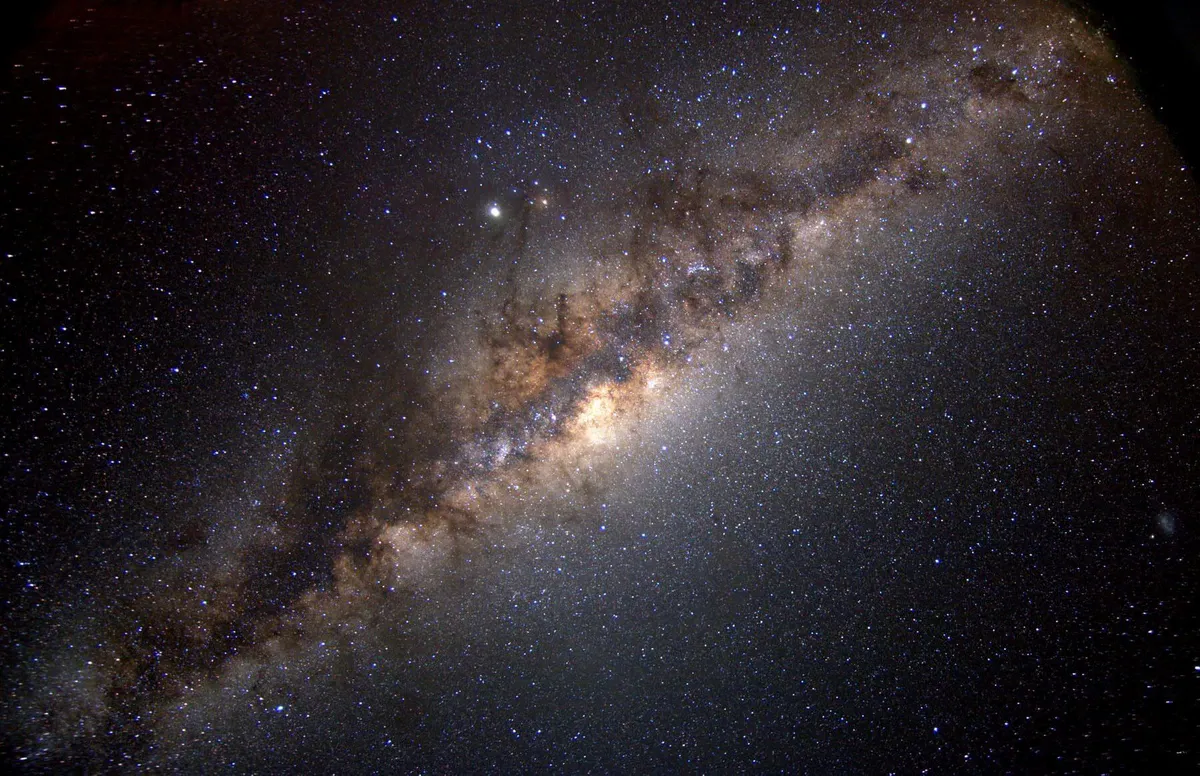
Image source: nps.gov
23. Einstein’s Relativity: The Big Twist in the Gravity Tale
When we think of gravity, we often imagine an apple falling on Newton’s head. But move over, apple, because Einstein’s theory of relativity swooped in with a plot twist. Instead of seeing gravity as a force between masses, Einstein described it as a warp in spacetime caused by mass and energy.
Picture spacetime as a trampoline. Place a heavy object (like a bowling ball) in its center, and it creates a dip. Roll smaller balls around it, and they’ll spiral towards the heavier object, not because they’re attracted to it, but because of the curve the bowling ball created. That’s Einstein’s relativity for you – turning our understanding of gravity on its head!
24. The Gravity Slingshot: How We Hitch Rides Across Space
Fuel is precious in space. So, how do spacecraft travel such vast distances without carrying an impractical amount of it? They hitch rides using the gravity of planets and moons!
Known as gravitational assists or gravity slingshots, spacecraft approach a planet and then use its gravitational field to boost their speed and change direction. It’s a bit like swinging a stone in a sling and releasing it, but in this case, the sling is the planet’s gravity. Voyager 1 and 2, the famous space probes, have used this technique multiple times to visit the outer planets and eventually, head out of our solar system.
25. A Gravitational Symphony: Colliding Galaxies
If you thought traffic jams on Earth were chaotic, wait till you witness the grandeur of colliding galaxies! When two galaxies get a tad too close for comfort, their respective gravitational pulls start interacting, leading to a cosmic dance that can span millions of years.
During this time, stars whiz past each other, creating new star-forming regions, and sometimes even leading to the birth of supermassive black holes at their centers. This gravitational symphony is not only an awe-inspiring sight but also a testament to the mighty power of gravity at a cosmic scale.
26. Dancing Stars: Binary Systems and Gravity
In the vast ballroom of the universe, stars too have dance partners! Many stars don’t fly solo; they’re in binary (or even multiple) systems, gracefully orbiting a common center of mass. This celestial tango is all thanks to, you guessed it, gravity!
As these stars whirl around one another, they can exchange mass, throw each other out of the system, or even merge into a single, more massive star. And here’s the kicker, our nearest stellar neighbor, Proxima Centauri, is part of a trinary system! It’s like watching a dance reality show but on a cosmic level.
27. Trivia Time: How Gravity Affects Time
Here’s a mind-blowing fact: gravity can literally bend time! As per Einstein’s theory of relativity, the stronger the gravitational field, the slower time passes relative to areas with weaker gravity. This is called gravitational time dilation.
For instance, time moves ever so slightly faster on a mountaintop than at sea level due to the difference in gravity. So, if you’ve been up a mountain, congratulations! You’re a teeny bit younger than if you’d stayed at the beach. Time travel, anyone?
28. Are We Shielded from Cosmic Rays by Gravity?
Our Earth, being the protective parent it is, does shield us from many outer space nasties, including a bulk of cosmic rays. But it’s not gravity that’s our main protector here. Instead, it’s our planet’s magnetic field, which deflects many of these high-energy particles.
However, gravity does play a role in keeping our atmosphere intact, which further absorbs and scatters these rays. So, while gravity indirectly aids in our protection, it’s the combined forces of nature that ensure we’re not fried by cosmic radiation. Phew!
29. The Whimsical Ballet of Asteroids
Imagine a ballroom filled with unpredictable dancers, swirling, darting, and occasionally bumping into each other. This, in essence, captures the dramatic ballet of asteroids.
Within the asteroid belt, located between Mars and Jupiter, millions of rocky bodies ranging in size dance and jostle, all under the guidance of the Sun’s gravitational pull. Occasionally, Jupiter’s gravity also tugs on these asteroids, leading to some erratic moves. And every once in a while, a stray asteroid might just get nudged into a path towards Earth. It’s a breathtaking, albeit slightly nerve-wracking, cosmic performance!
30. Under Pressure: Earth’s Core and Gravity
Beneath our feet, way down deep, Earth’s core is under some serious pressure. And we’re not talking about the Monday morning type!
The core, comprised of iron and nickel, experiences immense pressure due to the gravitational forces of the mass above it. This pressure, combined with the heat from radioactive decay, ensures that our planet’s inner core remains solid, even at temperatures hotter than the surface of the Sun.
Meanwhile, the outer core remains molten, its movement generating Earth’s protective magnetic field. Essentially, gravity ensures our core keeps its cool (or heat!) amidst all this intensity.
31. Let’s Talk About Escape Velocity
Ever thought about packing your bags and leaving Earth? Well, it’s not that simple! To break free from Earth’s gravitational clutches, you’d need to achieve a certain speed called the ‘escape velocity.’ For Earth, this is a whopping 11.2 km/s! Without reaching this speed, any object attempting to leave would just get pulled back.
The value of escape velocity varies for different celestial bodies, depending on their mass and radius. For instance, the Moon’s escape velocity is just 2.4 km/s – no wonder astronauts could return home after their lunar visit!
32. How Gravity Can Be Both Weak and Strong
This might come as a surprise, but gravity is the weakest of the four fundamental forces of nature (the others being electromagnetic, weak nuclear, and strong nuclear forces).
Ever tried to pick up a paperclip with a magnet while it’s still on the ground? That tiny magnet overpowers the entire Earth’s gravitational pull on the paperclip! However, gravity accumulates over distances and masses. So, while it might be weak on small scales, its strength grows as masses increase.
This is why it dominates on astronomical scales, holding planets, stars, and galaxies together. It’s like the silent introvert at a party who unexpectedly becomes the life of the soirée!
33. A World Without Mountains, Thanks to Gravity
If you’ve ever dreamt of a world without mountain-climbing or vertigo, then gravity’s got your back! Despite the Earth’s uneven terrain, it’s largely gravity that shapes our planet into an oblate spheroid (slightly flattened at the poles and bulging at the equator).
This shape minimizes the gravitational potential energy of our planet’s rocky material. Mountains and valleys do exist due to tectonic forces, but there’s a limit to how tall mountains can get.
Beyond a certain height, the base of the mountain would be crushed under its own weight, all thanks to gravity’s influence. So, while you can’t escape climbing some hills, at least they won’t reach into outer space!

oatsy40 / Flickr
34. What’s the Deal with Artificial Gravity in Movies?
Ah, Hollywood! The land where astronauts stride confidently inside spaceships, thanks to ‘artificial gravity’. But how close are these depictions to reality?
In actuality, creating Earth-like gravity on a spaceship without planetary mass is quite challenging. Most proposals revolve around rotating sections of the spacecraft, using centrifugal force (which is really just inertia) to mimic gravity’s effects.
So, while we’re not quite there yet in real-life space travel, the cinematic universe gives us a glimpse of what might be possible in the distant future. Popcorn, anyone?
35. The Ocean’s Invisible Hills and Valleys: Gravity at Play!
You might imagine the surface of Earth’s oceans to be pretty flat, right? I mean, water, level… it all makes sense. But, surprise! Our planet’s seas are not as even-steven as they seem.
Gravity changes subtly across the surface of the Earth because of the distribution of mass inside the Earth and the distance from Earth’s center. As a result, there are areas with stronger and weaker gravitational pulls, leading to what scientists affectionately call “gravity hills and valleys” in the oceans.
It’s a mind-blowing fact that the seas aren’t at the same level everywhere. The variances aren’t huge, but they do exist. So, next time you’re out sailing or just daydreaming about the vast blue expanses, remember that the oceans are not just deep and mysterious but also a bit bumpy, thanks to gravity!
FAQ
What are 10 interesting facts about gravity?
- Sir Isaac Newton’s Apple: Legend has it that Newton came up with the theory of gravity when he saw an apple fall from a tree in the mid-17th century. While the story might be slightly embellished, his work on gravity laid the foundation for modern physics.
- Gravity Bends Light: Einstein’s theory of general relativity predicts that massive objects can cause light to bend around them, a phenomenon called gravitational lensing. This has been observed in the universe when light from distant stars or galaxies is bent by the gravitational field of a massive object, such as another galaxy.
- Not Just Attraction: While gravity is most commonly known as an attractive force, it also can act as a repelling force in certain cosmological scenarios related to the concept of dark energy.
- Microgravity in Space: Astronauts in the International Space Station appear to be weightless, but they’re actually in a state of continuous free fall towards Earth. This creates a condition known as microgravity, which isn’t the absence of gravity, but rather the sensation of weightlessness.
- Gravitational Waves: Predicted by Einstein in 1915, these are ripples in spacetime caused by some of the most violent and energetic processes in the universe, such as the collision of black holes. They were first observed in 2015 by the LIGO collaboration.
- Different Planets, Different Gravities: The strength of gravity varies depending on the mass of an object. For example, gravity on Mars is only about 38% as strong as gravity on Earth. This means you’d weigh less on Mars than on Earth.
- Tidal Forces: The gravitational pull of the moon causes Earth’s oceans to bulge out in the direction of the moon. This is what gives rise to tides. Similarly, a close encounter with a massive object in space can exert tidal forces strong enough to tear apart celestial objects!
- Gravitational Time Dilation: According to Einstein’s theory of relativity, time passes differently in areas with different gravitational strengths. Clocks in stronger gravitational fields tick slower than those in weaker fields.
- Gravity is the Weakest Fundamental Force: There are four known fundamental forces in the universe: gravitational, electromagnetic, strong nuclear, and weak nuclear. Of these, gravity is by far the weakest, but it has an infinite range, which is why it can dominate on astronomical scales.
- Unifying Gravity: One of the biggest challenges in modern physics is finding a way to reconcile general relativity (which describes gravity) with quantum mechanics. This hypothetical unified theory is often referred to as quantum gravity, and despite many efforts, a complete and universally accepted theory has yet to be formulated.
What are the two fundamental facts about gravity?
- Every mass attracts every other mass.
- The force of attraction is proportional to the product of their masses and inversely proportional to the square of the distance between their centers.
What are the 3 rules of gravity?
While there’s no standard “three rules of gravity,” Newton’s law of universal gravitation has three key components:
- Every particle of matter in the universe attracts every other particle.
- The force is directly proportional to the product of their masses.
- The force is inversely proportional to the square of the distance between their centers.
What two things make gravity?
Mass and distance. The gravitational force between two objects increases with increasing mass and decreases with increasing distance.
What is the secret truth about gravity?
There’s no “secret truth” about gravity. However, while Newton’s laws can describe how gravity works, they don’t necessarily explain why it exists. Einstein’s theory of general relativity provides a deeper understanding, describing gravity not as a force, but as a curvature of spacetime caused by mass and energy.
Who invented gravity?
No one “invented” gravity, as it’s a natural phenomenon. Sir Isaac Newton, however, was the first to formulate a comprehensive theory of gravity in the late 17th century.
What will happen if there is no gravity?
Without gravity, planets wouldn’t orbit stars, stars wouldn’t form galaxies, and there would be no structure in the universe. On Earth, the atmosphere would drift off into space, and everything on the surface, including oceans and us, would float away.
Why is gravity so powerful?
While gravity is the weakest of the four fundamental forces, it has an infinite range and acts on all masses, no matter how small or large. Its cumulative effect on large objects like planets, stars, and galaxies makes it dominant on cosmic scales.
Where is gravity strongest on Earth?
Gravity varies slightly across the surface of the Earth. It is strongest where the Earth’s mass is densest. This is typically closer to the poles, due to the Earth’s oblate spheroid shape (it’s slightly flattened at the poles and bulging at the equator). Additionally, local variations in Earth’s topography and geology can cause minor differences in gravitational strength.
How old is gravity?
Gravity has existed as long as the universe itself. The current prevailing theory is that the universe began with the Big Bang around 13.8 billion years ago, and gravity, as a fundamental force, would have existed from that initial moment.


